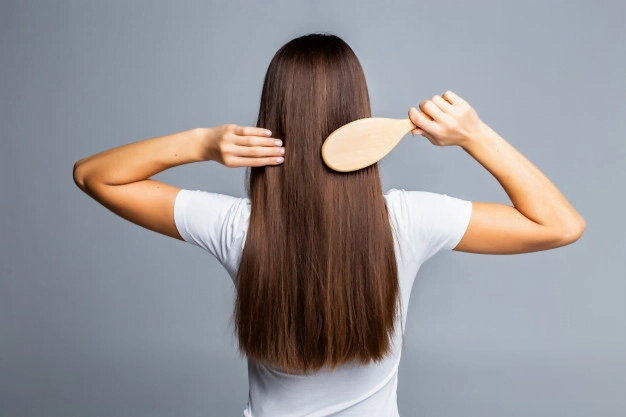A hair follicle drug test is a type of drug test that analyzes a sample of hair to detect the presence of drugs or alcohol. Hair drug testing is often used because it can provide a longer detection period than other types of drug tests, such as urine or saliva tests.
Table of Contents
ToggleDuring a hair follicle drug test, a small sample of hair is typically collected from the back of the head, near the crown. The sample is then analyzed in a laboratory to determine the presence and concentration of drugs or alcohol. Hair drug testing can detect the use of drugs or alcohol over the past 90 days or more, depending on the length of the hair sample.
Hair drug testing is generally considered to be more accurate and reliable than other types of drug tests, as it is more difficult to tamper with or adulterate the sample. However, hair drug testing is not foolproof and can produce false positives or false negatives in some cases.
It is important to note that hair drug testing is generally more expensive than other types of drug tests and is not as widely available. It is also important to be aware of any privacy concerns or legal implications related to hair drug testing.
Hair follicle testing is a highly efficient and accurate way of screening for drug use. Though most employers are now familiar with urine testing for drug use, hair follicle drug testing has been a more popular method. The reason behind this test’s popularity comes from the fact that it’s nearly impossible to cheat.
However, a lot of misconceptions exist regarding this drug test. Even though most people know about hair follicle drug testing, very few can tell the test’s facts apart from the prevalent myths. So, here’s busting the myths and clarifying the facts about hair follicle drug testing.
What Exactly is a Hair Follicle Drug Test?
A hair follicle drug test, commonly termed a hair drug test, is all about screening for the misuse of prescription meds and illicit drug use. A small amount of hair gets removed from the head for the test using scissors. This sample gets analyzed to detect all signs of drug use during the ninety days before the test. This test is generally asked to detect the use of the following drugs:
- Methamphetamine
- Amphetamine
- Marijuana
- Ecstasy
- PCP
- Cocaine
- Opioids (morphine, codeine, 6-acetyl morphine)
Some workplaces request a hair follicle drug test for screening illicit drug use randomly at the time of employment or before hiring. The test can also be beneficial when utilized alongside self-reporting to monitor drug use in at-risk individuals.
Can a hair follicle test detect 1-time use?
A hair follicle drug test can detect the use of drugs or alcohol over the past 90 days or more, depending on the length of the hair sample. While it is possible that a hair drug test may be able to detect one-time use of drugs or alcohol, it is not always reliable.
The detection window for drugs or alcohol in hair is generally longer than in other types of drug tests, such as urine or saliva tests. However, the amount of drug or alcohol present in the hair sample may be too low to detect if the use was only one-time or infrequent.
It is important to note that hair drug testing is not foolproof and can produce false positives or false negatives in some cases. Factors such as the type and amount of drug or alcohol used, the frequency of use, and the individual’s metabolism can all impact the accuracy of a hair drug test.
If you are concerned about a hair drug test detecting one-time use of drugs or alcohol, it is a good idea to consult a healthcare professional or a drug testing expert for more information.
Outlining the Facts and Myths About the Test
There are more myths than facts doing the rounds when it comes to the hair follicle drug test. Almost every other individual strictly believes in bizarre myths about the test. So, it’s high time to separate the facts from fiction.
Myth 1: You can use special shampoos to clean out your hair.
Fact 1: There are no known ways to cheat a hair follicle drug test.
You might have heard from your friend about this great shampoo that can cleanse your hair and help you pass the drug test. But, the truth is that no shampoo or hair care product can wash away the drugs embedded in your hair follicle.
The substance you ingest eventually hits the bloodstream before traveling to all parts of the body, including your hair follicles. After it gets embedded in your hair follicles, it resides there for a long time. So, if you have used drugs in the last three months, the hair follicle drug test will detect it.
Myth 2: Completely shaving your head helps to avoid getting tested.
Fact 2: The body hair can be utilized to run the test and get the results.
It is also nothing more than a misconception that you can trick the test by shaving off all your hair. The test can still be conducted using the hair on your body, especially from arms or legs. As the substance gets embedded in all your hair follicles, the test will be conclusive even when done on body hair.
In the same way, even having concise hair is not going to save you. Even though a more extended hair sample means a longer detection window, only two inches of hair is enough for the test.
Myth 3: The type of color of hair can impact test results.
Fact 3: The result does not depend on the type or color of hair.
Is it easier to detect drug use on blond hair, or do brunettes have more reasons to worry about? What about the blondes with curly hair? You have no reason to worry or even relax because you have a specific color or type of hair.
Several studies have concluded that neither hair type nor color can impact the results of a hair follicle test for drug abuse. Researchers have decisively concluded that there is no evidence suggesting that one group, i.e., a certain race, was more readily impacted by hair testing than urine testing.
Myth 4: Being around drug users might make you fail the test.
Fact 4: Passive exposure to smoke will not impact the results.
Simply being around drug users does not make you fail any test, and the hair follicle drug test is nothing different. Let’s take an example to explain the situation.
You sit beside someone who uses marijuana, but you are not inhaling any kind of THC (the component that causes the high) from that source. There is only a minimum amount of THC in passive smoking, which is about a hundred times less potent than what you get by smoking from the source. So, you have nothing to worry about when it comes to failing the test because you were at a party with friends who were smoking marijuana.
Myth 5: Hair Follicle Drug test reveals current impairment.
Fact 5: The test is unable to detect current drug impairment.
One of the Hair Follicle Drug test’s primary drawbacks is that it is not too useful in detecting present impairment. Even though the test has such a long look-back period, the detection window starts about a week back.
The fact is that it takes about seven days for the drug to get embedded in your hair. So, if the aim is to detect current impairment, other options like breath alcohol testing and urine testing can be much more effective. Besides, if you took a recreational drug on the day before the test, you can be assured that it won’t show up on your test.
Can a hair follicle test go back 6 months?
A hair follicle drug test can detect the use of drugs or alcohol over the past 90 days or more, depending on the length of the hair sample. The detection window for drugs or alcohol in hair is generally longer than in other types of drug tests, such as urine or saliva tests.
The length of the hair sample can affect the detection period. A 1.5-inch hair sample, which is the standard length used in hair drug testing, can detect drug use over the past 90 days. A longer hair sample, such as a 3-inch sample, can potentially detect drug use further back in time.
It is important to note that hair drug testing is not foolproof and can produce false positives or false negatives in some cases. Factors such as the type and amount of drug or alcohol used, the frequency of use, and the individual’s metabolism can all impact the accuracy of a hair drug test.
If you are concerned about a hair drug test detecting drug or alcohol use over a specific period of time, it is a good idea to consult a healthcare professional or a drug testing expert for more information.
What can cause a positive hair follicle test?
A hair follicle drug test can detect the presence of drugs or alcohol in the hair. A positive result on a hair drug test indicates that drugs or alcohol were present in the body at some point in the past 90 days or more, depending on the length of the hair sample.
There are several factors that can cause a positive result on a hair drug test:
- Use of drugs or alcohol: The most common cause of a positive result on a hair drug test is the use of drugs or alcohol. Different drugs or alcohol can be detected in the hair for different lengths of time, depending on the type and amount of drug or alcohol used, the frequency of use, and the individual’s metabolism.
- Contamination: It is possible for hair to become contaminated with drugs or alcohol through external sources, such as secondhand smoke or contact with contaminated surfaces. However, the amount of drug or alcohol present in the hair due to contamination is generally much lower than from direct use, and is less likely to result in a positive result on a hair drug test.
- False positives: In rare cases, a hair drug test can produce a false positive result, meaning that the test indicates the presence of drugs or alcohol when they are not actually present. False positives can be caused by a variety of factors, such as laboratory error, the use of certain medications or hair care products, or the presence of certain medical conditions.
It is important to be aware of these potential causes of a positive result on a hair drug test and to discuss any concerns with a healthcare professional or a drug testing expert.
The Bottom Line
These facts and myths go around the fair follicle drug test. This should clear up any confusions that you might have had about the test. It will help you better gauge the possible results of the upcoming trial.
Furthermore, the test administrator needs to be informed about the prescribed medicines you have been consuming. Medications might interfere with the results and give you a false positive on the test.
Thus, once the test experts know everything, they can suggest what to do and whatnot. So, keep it open regarding your medical history and update everything to the expert for a seamless test.



